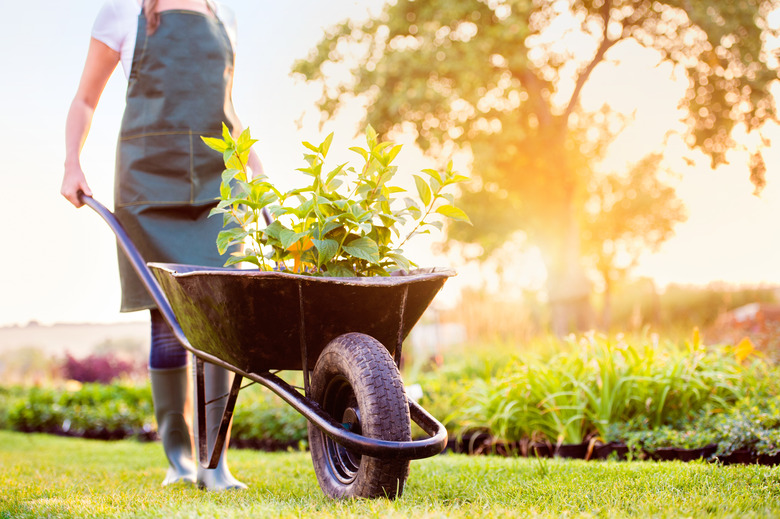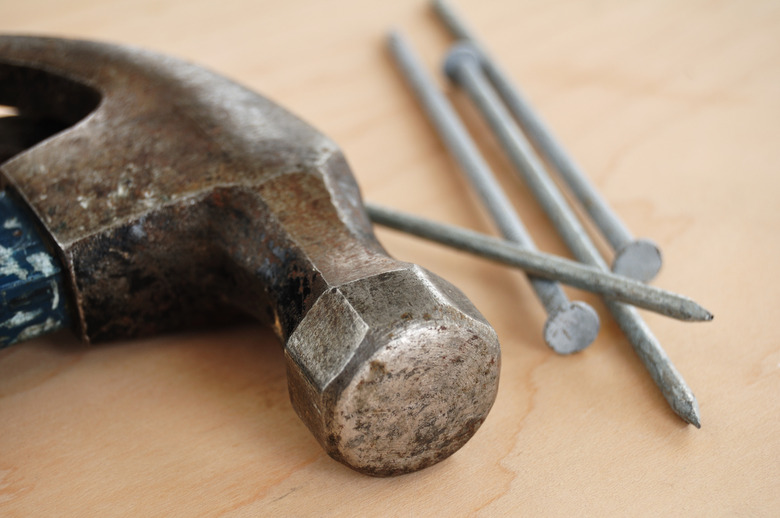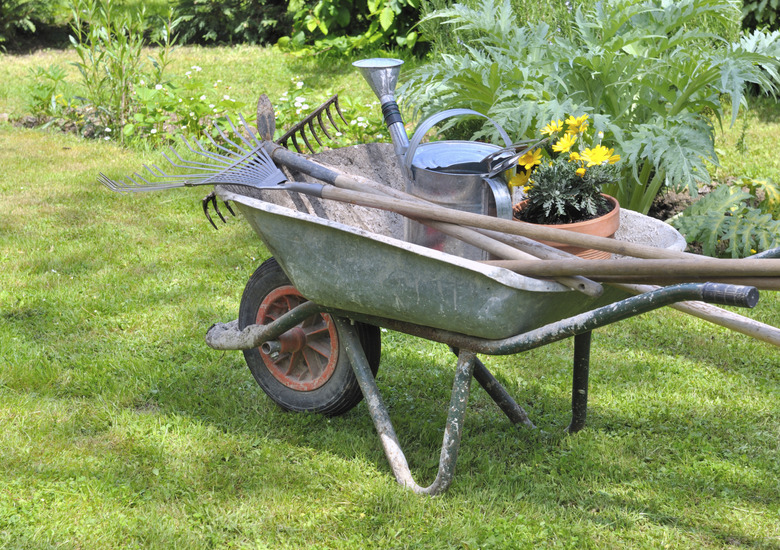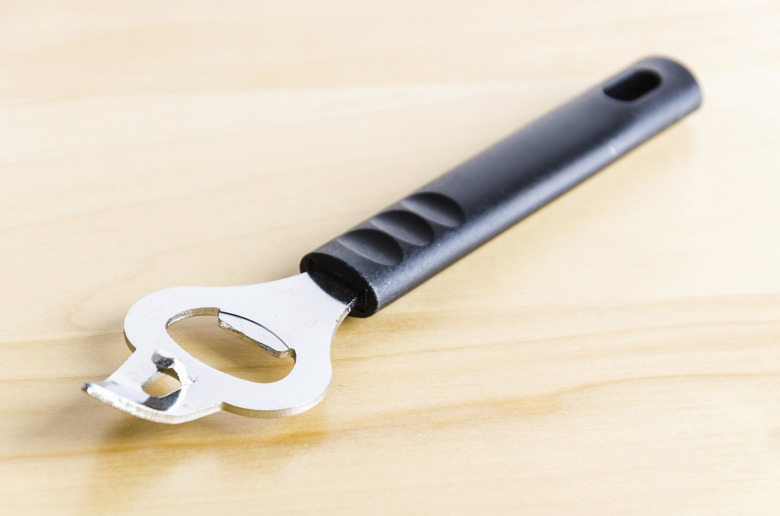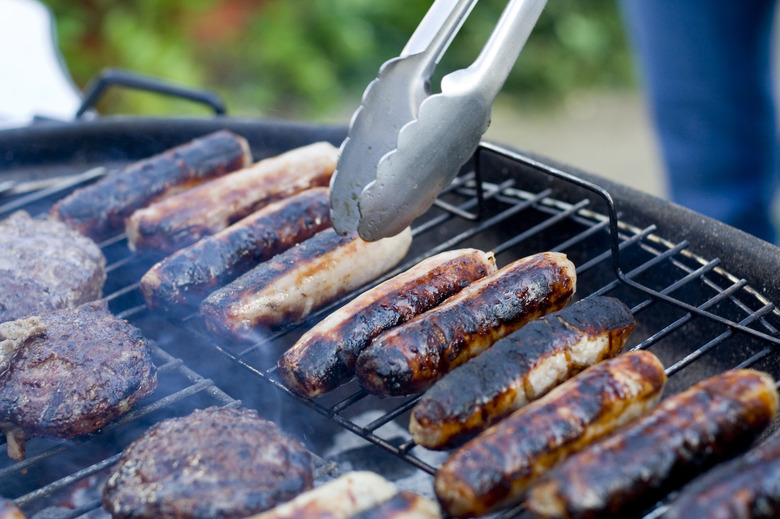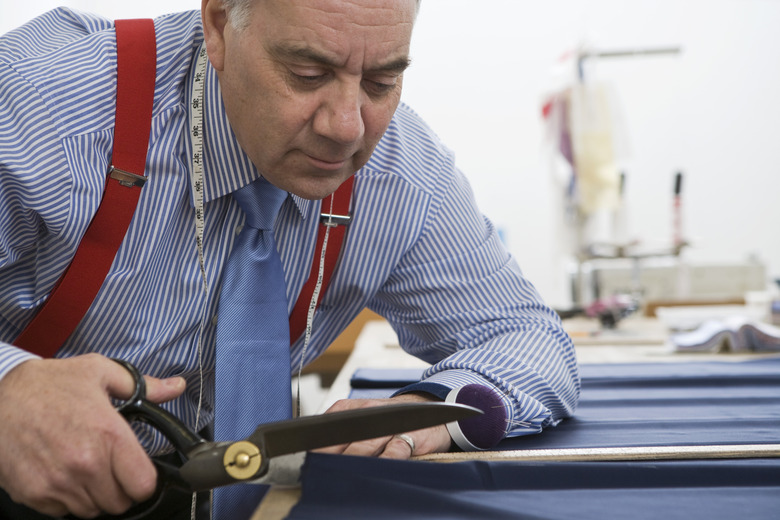Levers Used In Everyday Life
Levers make it easier to lift heavy materials, remove tight objects and cut items. A first-class lever has a fulcrum in the center, between the effort — or force — and the load, the object being moved or lifted. A second-class lever has a fulcrum at one end and a load in the middle. A third-class lever has a fulcrum at one end and a load at the opposite end. Everyday levers help you accomplish tasks that would otherwise be too heavy or cumbersome to maneuver.
Hammer Claws
Hammer Claws
Hammer claws are common levers that help you remove embedded nails in wood or other hard surfaces. Hammer claws are first-class levers because the fulcrum is at the base of the hammer head, and you use effort, also known as force, to lift the handle and pry materials with the metal-claw end. A first-class lever is similar to a traditional see-saw because applied force at one end raises the other end, thanks to the fulcrum creating a pivot point in the middle.
TL;DR (Too Long; Didn't Read)
Many simple tools incorporate levers, including hammer claws, wheelbarrows, bottle openers, scissors and tongs.
Weight-Bearing Wheelbarrows
Weight-Bearing Wheelbarrows
Wheelbarrows are helpful everyday tools because they allow you to transport loads that are too bulky or heavy to carry with your arms. A wheelbarrow is a second-class lever because the front wheel serves as the fulcrum. The weight-bearing load rests in the center of the wheelbarrow, and you use human force to lift the handles on the other end to roll the wheelbarrow where you want it to go.
Bottle Openers
Bottle Openers
A bottle opener is a second-class lever because the pivot point is at one end of the opener and the load is in the middle. In this case, the load is the bottle itself, or specifically the secured bottle cap on the bottle, and the handle provides a way to lift and remove the cap from its tightly secured position. Because applied force is sometimes greater than the strength of the metal cap, the cap might crease or bend in half.
Tweezers and Tongs
Tweezers and Tongs
Tweezers and tongs are examples of levers that make it easy to lift or remove items, even though the items aren't heavy. Tweezers and tongs are third-class levers because the fulcrum is at one end and the load is at the other. You must use human effort in the center of the lever to pinch the tweezers or tongs to grasp and lift or remove materials.
Scissors and Shears
Scissors and Shears
Scissors and shears are first-class levers, even though the fulcrum is slightly off center. The centralized fulcrum still serves as the pivot point that allows you to raise and lower the dual bars at one end with the handles on the other end. Scissors are an example of a lever that uses force to cut or separate materials.
Cite This Article
MLA
Tucker, Kristine. "Levers Used In Everyday Life" sciencing.com, https://www.sciencing.com/levers-used-everyday-life-8435160/. 30 April 2018.
APA
Tucker, Kristine. (2018, April 30). Levers Used In Everyday Life. sciencing.com. Retrieved from https://www.sciencing.com/levers-used-everyday-life-8435160/
Chicago
Tucker, Kristine. Levers Used In Everyday Life last modified March 24, 2022. https://www.sciencing.com/levers-used-everyday-life-8435160/
